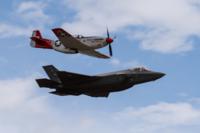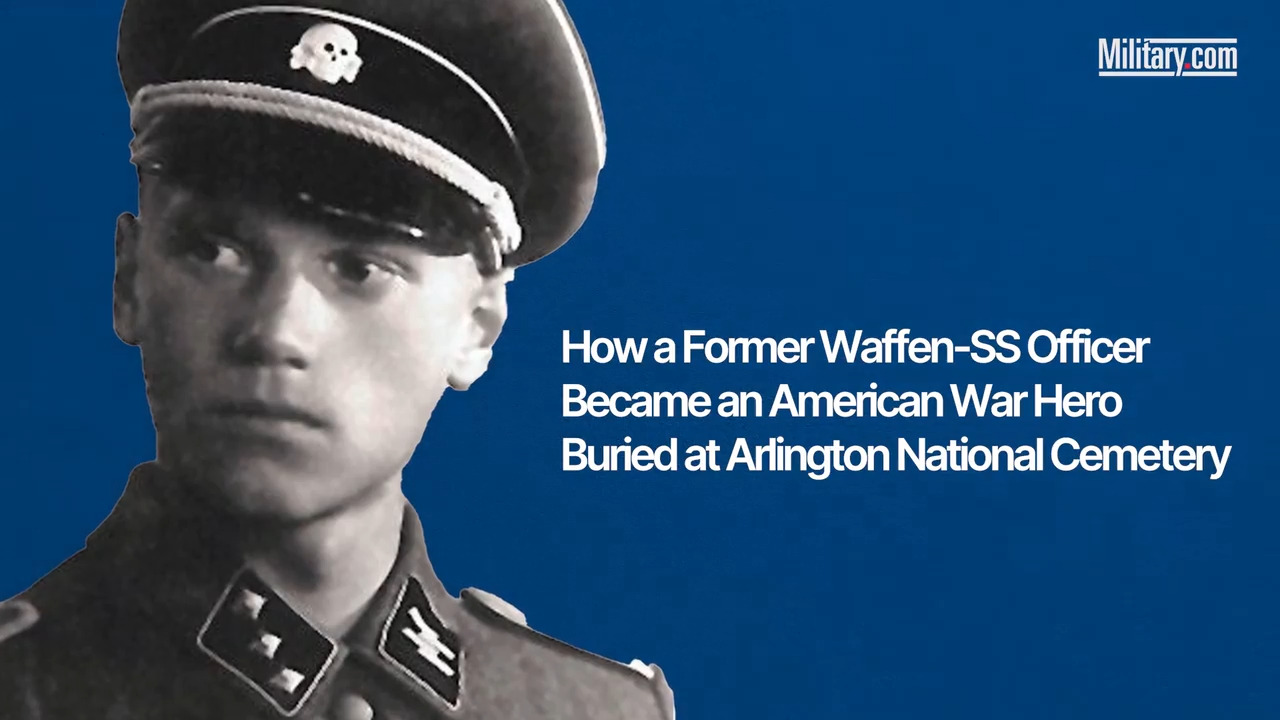2023 was a tough year for the veteran community. The list below doesn’t include all the notable veterans lost last year, but we can be thankful that the lives below were long, well lived, and with unforgettable memories.
Probably the most remarkable thing about the lives these veterans led is that they will continue to affect so many of us for decades to come.
Shecky Greene
Born Fred Sheldon Greenfield, the famed Las Vegas nightclub comic-turned TV and film personality served in the Navy during World War II. Before taking the stage with the likes of Frank Sinatra and Elvis Presley or guest hosting “The Tonight Show,” he served aboard a battleship where his primary non-combat duty was managing an ice cream machine. When asked what the toughest part of WWII was, he jokingly answered, “butter pecan.”
Norman Lear
Lear was the creative mind behind some of the Golden Age of Television’s most iconic and continuously influential shows and characters, many of which still shape the modern television landscape some 60 years later. These include "Sanford and Son," "The Jeffersons" and, of course, "All in the Family." He joined the Army Air Forces after the attack on Pearl Harbor and flew 52 bombing missions over Nazi-occupied territory as a radioman in a B-17 Flying Fortress. He moved to Los Angeles in 1945 to start his civilian life there.
Henry Kissinger
As a young Jewish man, Henry Kissinger was forced to flee his native Germany with his parents, finding safety from Nazi persecution in the United States. Six years later, he would write to his parents from Germany, having returned as an American soldier to end the Nazi regime. He gained his citizenship while in basic training in 1942. In 1944, he sailed for Europe in time for the Battle of the Bulge and to liberate the Hannover-Ahlem concentration camp. In the years that followed, he rose from Army private to NCO in the Counter Intelligence Corps (Army CIC), chasing down former members of the Gestapo.
Bob Knight
At age 24, Knight was the head coach of the Army Black Knights basketball team. But just two years before that, he was an active duty enlisted soldier stationed at the U.S. Military Academy and working for the basketball team. For his six years as Army head coach, he would have a 102-50 record and only one losing season, his on-court intensity earning him the nickname “The General.” 1971 would see Knight hired by Indiana University, where he would become equally famous for his temper and his record over the next 29 years.
Bob Barker
Barker’s most famous fight might have been with Adam Sandler in the 1996 comedy “Happy Gilmore,” but the longtime host of “The Price Is Right” was ready to go toe-to-toe with Tojo in the Pacific Theater during World War II. He joined the Naval Reserve at age 18 after leaving behind a basketball scholarship at Drury College. Barker was an excellent combat pilot who could land multiple aircraft on carriers and fight at night, but he never made it to the Pacific and went back to college after the war ended.
Tony Bennett
Anthony Dominick Benedetto went into World War II Europe as an infantry rifleman, but he left as a singing member of the Special Services, inspired by Bob Hope’s USO shows and ready to make a lifelong passion into a career. He called the combat part of war a “front row seat in hell,” and who could blame him? He fought his way into Germany and liberated part of the Dachau concentration camp complex before coming home to New York City. He studied singing on the GI Bill and changed his name to Tony Bennett, and the rest is history.
Daniel Ellsberg
Ellsberg is best known for contributing to a top secret, multi-volume study of classified documents related to the Vietnam War for Rand Corporation. He then leaked many of those documents to The New York Times to reveal that not only could the Vietnam War not be won, but that the Johnson administration lied to the American people and Congress about it. The incident became known as “The Pentagon Papers.” Before making that kind of history, Ellsberg enlisted in the Marine Corps after graduating from Harvard. He earned a commission and served for three years before his 1957 discharge.
Cormac McCarthy
Somewhere between dropping out of college and becoming a famous author, Cormac McCarthy, author of “The Road," "No Country for Old Men" and "Child of God," joined the U.S. Air Force. The time he spent in the service might have shaped his later works. He found military life monotonous and read a lot of books to pass the time, especially the years he spent in Alaska. The authors he read included some of his influences, like Herman Melville, Fyodor Dostoevsky and William Faulkner.
Harry Belafonte
As World War II raged on around the world, the future “King of Calypso” and civil rights icon joined the U.S. Navy from his hometown of New York City at age 17. He served for 18 months, from 1944 until the war’s end. As a Black sailor, he was not assigned to a frontline job in the Pacific. Instead, he loaded ships bound for that theater. After the war, he used the GI Bill to study theater in New York, where he developed his affinity for folk music. By 1956, he was a household name, selling millions of albums.
Jerry Springer
Before he became a daytime talk show icon, Jerry Springer was a political “golden boy” in Ohio politics. Springer was an Army Reservist during his run for Congress. He lost that election after being called to active duty during the campaign, but his showing inspired him to run for City Council and mayor in Cincinnati. That led to his unsuccessful run for Ohio governor in 1982. If his loss at the ballot box didn’t end his political career, “The Jerry Springer Show” would have. The racy, overtly sexual and often-violent talk show ran for 27 seasons and altered the daytime television landscape forever. Even today, a public fight will draw chants of “Jerry! Jerry! Jerry!”
Al Jaffee
Jaffee was a longtime Mad Magazine cartoonist who created the first Mad Magazine “fold-in” cartoon, a one-panel comic that, when folded into thirds, created an entirely new punchline, often an answer to the full frame. In his early years, he worked for several comic companies, including a precursor to Marvel Comics, Timely Comics and Atlas Comics. He joined the Army during World War II, becoming a military artist. After the war ended and Jaffee was discharged in 1946, he went to work for comic legend Stan Lee. He began his full-time tenure at Mad in 1958 and for 55 years, he was the only one making the famous “fold-in.” He died at age 102 in Manhattan.
Bud Grant
Grant is remembered as No. 3 on the list of all-time most successful football coaches, with 283 wins across both the National Football League and the Canadian Football League. He graduated high school in 1945, eager to get into World War II, and joined the Navy to be a crewman aboard a landing ship. The war ended before he could finish training, but he played football at Great Lakes Naval Training Center under another NFL legend, then-Lt. Paul Brown. Grant went to college, chose to play basketball after graduating and spent two seasons with the Lakers before coming home to football. He led the Vikings to all four of their Super Bowl appearances, but lost all of them.
Burt Bacharach
Grammy-, Oscar- and Tony-winning musician Burt Bacharach was drafted by the Army in the late 1940s and was still on active duty when the Korean War broke out. He never saw action in Korea, however. He played piano at officers clubs in Germany and the United States, mostly improvised tunes or pop songs of the day until 1952. After leaving the Army, he continued playing piano professionally, until he became the player for Marlene Dietrich’s nightclub act. From there, he began writing songs, which became central to his 70+ years in show business. Bacharach was still earning Grammy nominations through 2021.
Robert Blake
Younger readers might be familiar with actor Robert Blake only because of his public trial for the murder of his second wife, Bonny Lee Bakley, for which he was acquitted in 2005. But Blake had probably one of the longest-running careers in Hollywood. His career began as a child in the 1930s, as a replacement for Porky on MGM’s “Our Gang” (“The Little Rascals”) shorts. He was drafted into the Army in 1950 and spent his term in Alaska before coming back to Los Angeles to resume his acting career. His credits include “Pork Chop Hill,” “In Cold Blood” and “Baretta.”
Keep Up With the Best in Military Entertainment
Whether you're looking for news and entertainment, thinking of joining the military or keeping up with military life and benefits, Military.com has you covered. Subscribe to the Military.com newsletter to have military news, updates and resources delivered straight to your inbox.

















